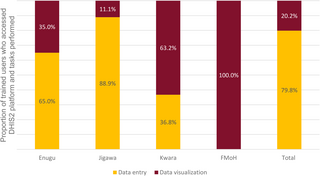As World Mental Health Day approaches on October 10, there’s no better time for individuals to evaluate their mental well-being, particularly when it comes to the similarities between chronic stress and depression. Both conditions can present with overlapping symptoms, complicating the path to accurate diagnosis and effective treatment.
Common indicators of chronic stress often parallel those seen in depression, including:
- Fatigue
- Difficulties with concentration and memory
- Changes in sleep patterns or appetite
- Decreased motivation
Adrienne Means-Christensen, director of the Psychological Services Center at Virginia Tech, comments on the connection between chronic stress and mood disorders: “People under chronic stress often neglect basic self-care, which can worsen mood and cognitive function.” She emphasizes the significant toll chronic stress takes on both physical and psychological health.
“The sympathetic nervous system remains ‘turned on’ during periods of chronic stress, which can lead to exhaustion and wear down the body and mind,” Means-Christensen explains. “Chronic stress depletes our resources as our bodies go through the stages of handling it. During the final exhaustion phase, several symptoms may resemble those of depression.”
It is crucial for individuals experiencing depressive symptoms to consider whether chronic stress is the underlying issue, as stress often responds well to lifestyle modifications. “To diagnose true depression, it’s essential to identify feelings of being ‘down’ or a genuine loss of interest in activities, regardless of fatigue or energy levels,” she states. “If individuals do not experience either of these core symptoms, it may be beneficial to assess their stress levels.”
The expert suggests examining fundamental aspects of one’s life, including sleep quality, nutrition, and social interactions, as they play a significant role in mental health. A professional can provide clarity on the appropriate diagnosis and guide individuals toward effective treatment options. “Stress may improve with lifestyle changes, while depression often requires therapy or medication,” Means-Christensen adds.
A closer look at mental health trends in America reveals concerning statistics. According to a recent report from Mental Health America, nearly 25% of Americans reported experiencing some form of mental illness in the past year. Despite relative stability in the figures from 2021 to 2024, the prevalence of mental health issues remains alarmingly high.
In 2024 alone, approximately 60 million adults in the United States, accounting for 23.4% of the population, reported mental health struggles. This translates into over 46 million individuals facing mental health challenges. In Virginia, the impact is evident, with about 1.5 million residents grappling with mental health issues in the same year.
The need for effective mental health support and resources is more critical than ever. Means-Christensen advocates for seeking assistance from mental health professionals who can help identify whether individuals suffer from chronic stress, depression, or both. By addressing these issues proactively, individuals can begin to reclaim control over their mental health and overall well-being.
In conclusion, while chronic stress and depression may share similar symptoms, understanding their differences is essential for effective management. Individuals are encouraged to prioritize self-care aspects and seek help, as recognizing the distinction between these two conditions can lead to better health outcomes and improved quality of life. As World Mental Health Day serves to raise awareness, it also emphasizes the importance of taking mental health seriously and fostering strategies to combat the toll it can take on everyday living.






